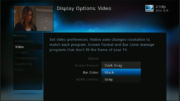The web is abuzz this morning with comments from AT&T CEO Randall Stephenson, who said in a recent Bloomberg article that DIRECTV Now, the company’s upcoming streaming service, will be the primary TV delivery vehicle by 2020. Personally, I would not spend a lot of time reading the article as it’s full of other proven inaccuracies. It claims DIRECTV Now will be free at launch, which is probably not true, and it claims only one DIRECTV streaming service will be launched which is definitely not true. But the DIRECTV faithful aren’t worried about that — they’re worried that Mr. Stephenson will shutter the satellite service in the next three years.
Simple as this: don’t worry.
Firstly that’s not what Mr. Stephenson said. In fact the quote is much more vague, saying:
AT&T Inc.’s online streaming TV service, DirecTV Now, will become the company’s primary video platform in three to five years, according to people familiar with the plans.
None of this tells us what “primary video platform” means and it certainly doesn’t mean the end of the satellite TV product. In fact, “primary” usually means there is more than one and “primary” in this case could mean that AT&T will spend the most money growing the streaming service, nothing more. That would make a ton of sense since the satellite service is already the largest pay-TV service on the planet and doesn’t need to get bigger, while the streaming service doesn’t even exist yet. Put that way, it doesn’t sound like such a bad thing.
When DIRECTV was a standalone service, things moved slowly. So slowly in fact that most of us complained. In general, it took about 10 years between the time that a new technology was implemented and an old technology was completely phased out. That’s what we saw with the pre-APG receivers (those made before the DIRECTV D10.) The new technology rolled out in 2003 and the old receivers still worked until 2013. DIRECTV’s major HD rollout was in 2007-2008 and we will still see SD programs out there until 2019. This train is slow to change directions, that’s for sure.
Let’s be clear too that becoming part of AT&T did not make DIRECTV executives more nimble. If anything, AT&T is an even larger and slower-moving enterprise. They’re still supporting dozens of wireless technologies that haven’t been in phones for years, and it could be a decade or more before the vestiges of the old U-Verse service are gone. This is not a company that’s going to shut down satellite TV in 3 years.
Here’s (what I think is) a more likely timeline: DIRECTV will begin to move to a hybrid satellite/cellular delivery system in the next few years. They’ve been spending billions in getting ready for streaming and I could imagine a new satellite dish that also incorporates a large LTE antenna for delivery of local channels. As older satellites age out, they may not be replaced, and since I have forecasted that up to 75% of TV channels will disappear in the next five years, the current satellite fleet will probably serve DIRECTV’s needs for another decade or more.
I think if you try to think about the world of 2026 you have to look back at 2006 and how much things have changed. In 2006 practically no one had a DVR or a smartphone. Many people were in the midst of getting their first HDTV. When you got online, you looked at the world through your PC’s monitor and pulled information down at 1 megabit per second if you were lucky. Fewer than 1% of people streamed programs at all. Looking back at how much things have changed in ten years, it’s perfectly possible to imagine that in another ten years things will be massively different. I think there will be abundant wireless bandwidth, and with roof-based antennas it will be both easy and cheap to get 100Mbps service wirelessly. At that point why would you need to spend billions of dollars to put a satellite up in orbit when ground-based cell towers could do exactly the same thing?
But, that’s 2026. The big takeaway today is that if you love satellite TV, there’s nothing to worry about today. Everything will continue on just the way you like it. The only difference is that you’ll have some new options for TV watching in the future.





